IGBOFOCUS
Igbo Foods
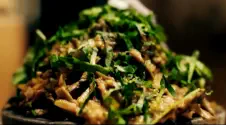
This section of Igbo Foods is self-explaining that tries to give accounts on foods
found in Igbo land. Nonetheless, some of the foods found in this section may be
similar to other foods found in different regions in the country or those found in
different part of the world.






















Part of this section of Igbo foods discusses: All Igbo foods including yam, fish yam pepper soup, Nkwobi, Fried
plantain, Egusi soup and pounded yam, jollof rice, ona, yam pepper soup, stockfish soup, fish pepper soup, food
soup, akara, akamu, yam porridge, etc.
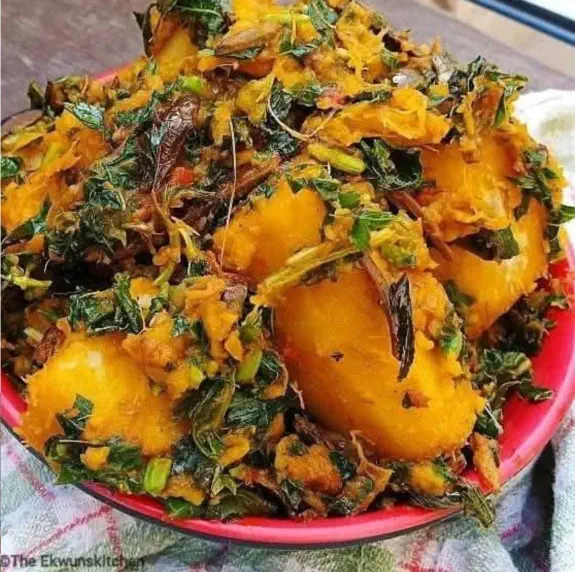
Yam Porridge
Looking at this Yam Porridge, very appetising, a mouth-watering Yam Porridge that is right and proper for
any king, with various vegetables surrounding pieces of yam that make them look very appealing to eat.
The dish has been prepared by Marvel Chihurumnanya.
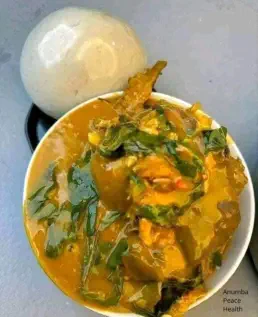

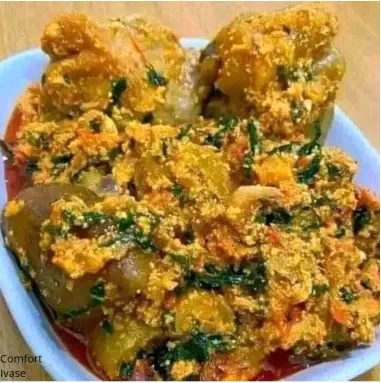
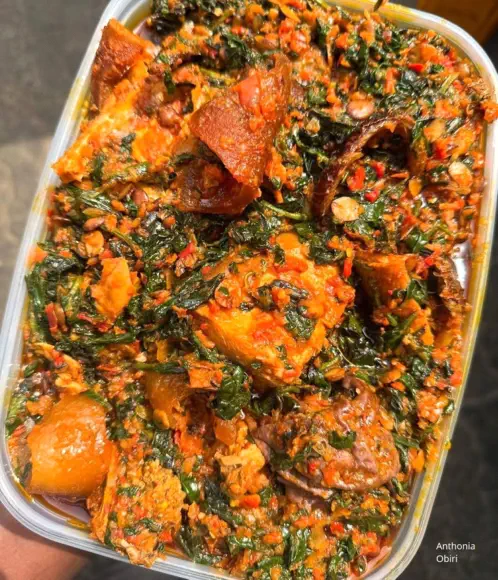
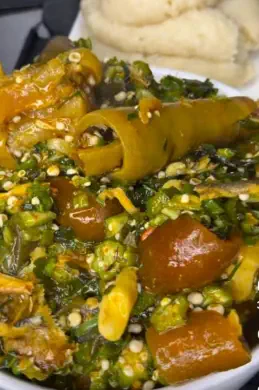
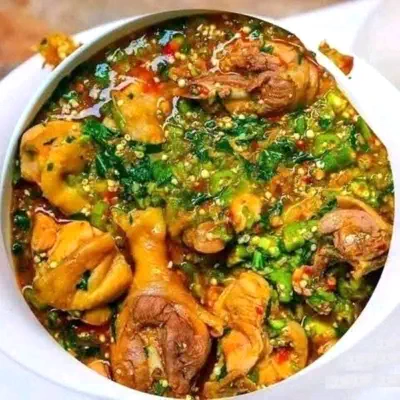
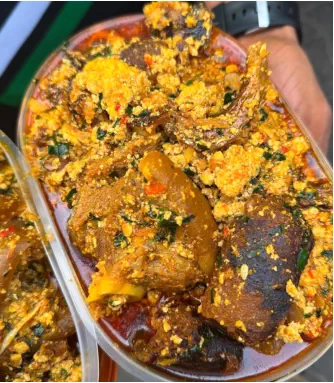

Oha Soup
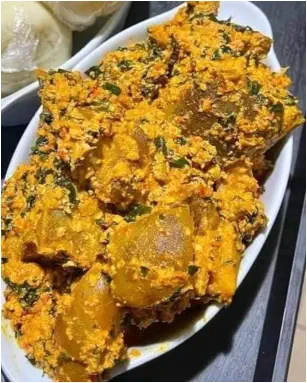
One more brilliant egusi soup,
delightful food, good for your health
food that definitely tempt you to
consume more and more of mouth-
watering egusi soup. Prepared to
entice you to eat more egusi soup
by Comfort Ivase.

Miscellaneous pepper soup; crab, snail, meat and fish
pepper soup prepared by Serafiner Obodo Choice
The beauty of Okro Soup is its
greeneries with little white balls
and the assortment of meat, fish,
crab and snail. This one has been
prepared by Serafiner Obodo
Choice.
Exquisite okro soup. I am fantasising on
devouring into this delicious Okro Soup. By
looking at this okro soup, it is very appetising.
Prepared by Ugochi Eunice.
Another delicious looking Okro
Soup which any person can
plunge into for fulfilling
appetite. This okro soup has
been prepared by Mary
Gabriel of Traditional Food.
The assortment of meat, fish and vegetable for
delicious Igbo fabulous casserole, prepared by
Anthonia Obiri
Egusi Soup
A superb looking Egusi Soup which
inevitably give you the impression that
would taste marvellously good when
eating it. Prepared by Comfort Ivase.
Another superb nourishing Egusi Soup
that will certainly tantalise you to
consume tasty egusi soup and swallow
or fufu that will fill you up for hours
being fulfilled with food. Prepared by
Comfort Ivase.
Oha Soup is said to be the most romantic
soup because more and more couples
seemed to consume it together. Oha soup
is not too sweet nor too bitter but very
moderate in everything. This oha soup has
been prepared by Anumba Peace Health.

Okra/Ọkrọ/Okro Soup
Another Oha Soup with
different ingredient to make it
tastier or to taste dissimilar,
fresher or successively. Also,
this oha soup has been
prepared by Anumba Peace
Health.
A different Oha Soup with less oha leaves
or greeneries. Oha soup can be cooked
with different meat, fish, snail or crab.
Also, this oha soup has been prepared by
Anumba Peace Health.
Part of this section of Igbo foods discusses: All
Igbo foods including yam, fish yam pepper soup,
Nkwobi, Fried plantain, Egusi soup and pounded
yam, jollof rice, ona, yam pepper soup, stockfish
soup, fish pepper soup, food soup, akara, akamu,
yam porridge, etc.

Yam Porridge
Looking at this Yam Porridge, very
appetising, a mouth-watering Yam
Porridge that is right and proper for any
king, with various vegetables surrounding
pieces of yam that make look very
appealing to eat. The dish has been
prepared by Marvel Chihurumnanya.

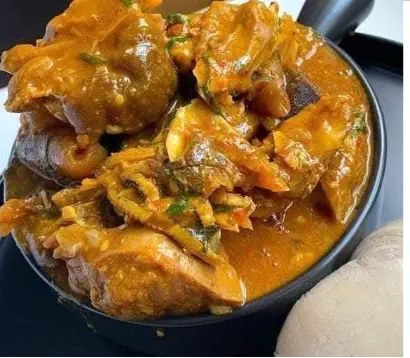
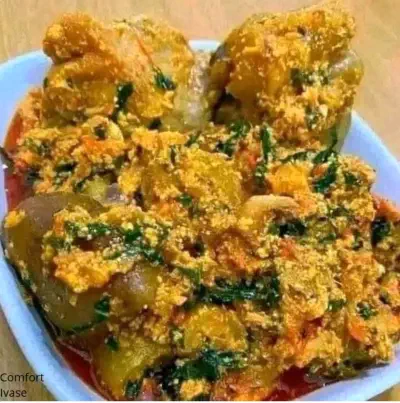



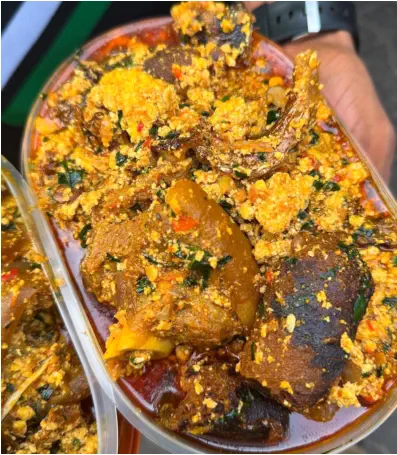
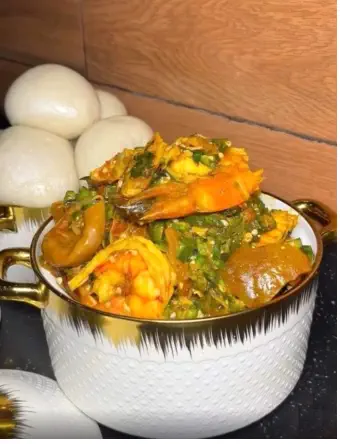
Oha Soup
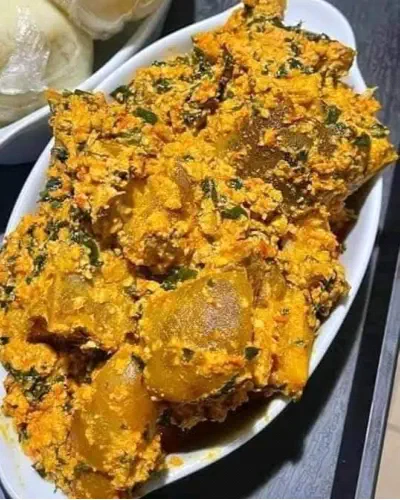
One more brilliant egusi soup, delightful
food, good for your health food that
definitely tempt you to consume more and
more of mouth-watering egusi soup.
Prepared to entice you to eat more egusi
soup by Comfort Ivase.

Miscellaneous pepper soup; crab, snail,
meat and fish pepper soup prepared by
Serafiner Obodo Choice
The beauty of Okro Soup is its
greeneries with little white balls and the
assortment of meat, fish, crab and snail.
This one has been prepared by Serafiner
Obodo Choice.
Exquisite okro soup. I am fantasising on
devouring into this delicious Okro Soup. By
looking at this okro soup, it is very
appetising. Prepared by Ugochi Eunice.
Another delicious looking Okro Soup which
any person can plunge into for fulfilling
appetite. This okro soup has been prepared
by Mary Gabriel of Traditional Food.
The assortment of meat, fish and vegetable
for delicious Igbo fabulous casserole,
prepared by Anthonia Obiri
Egusi Soup
A superb looking Egusi Soup which
inevitably give you the impression that
would taste marvellously good when eating
it. Prepared by Comfort Ivase.
Another superb nourishing Egusi Soup that
will certainly tantalise you to consume tasty
egusi soup and swallow or fufu that will fill
you up for hours being fulfilled with food.
Prepared by Comfort Ivase.
Oha Soup is said to be the most romantic
soup because more and more couples
seemed to consume it together. Oha soup
is not too sweet nor too bitter but very
moderate in everything. This oha soup has
been prepared by Anumba Peace Health.

Okra/Ọkrọ/Okro Soup
Another Oha Soup with different
ingredient to make it tastier or to taste
dissimilar, fresher or successively. Also,
this oha soup has been prepared by
Anumba Peace Health.
A different Oha Soup with less oha leaves
or greeneries. Oha soup can be cooked
with different meat, fish, snail or crab.
Also, this oha soup has been prepared by
Anumba Peace Health.
Igbo Foods
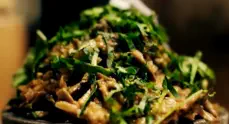
This section of Igbo Foods is self-explaining that tries to
give accounts on foods found in Igbo land. Nonetheless,
some of the foods found in this section may be similar to
other foods found in different regions in the country or
those found in different part of the world.
